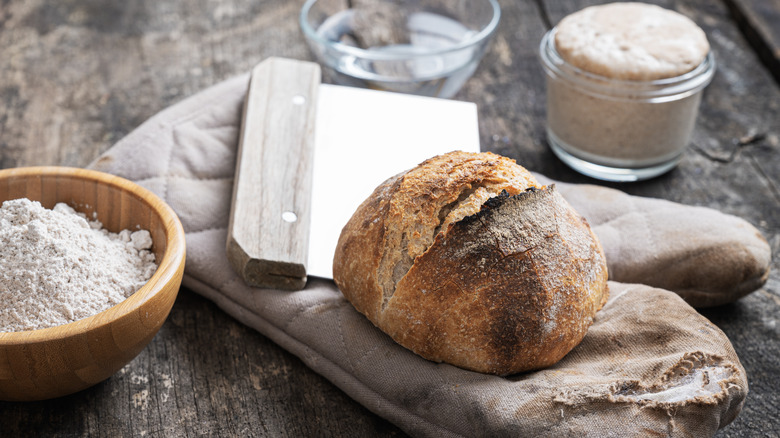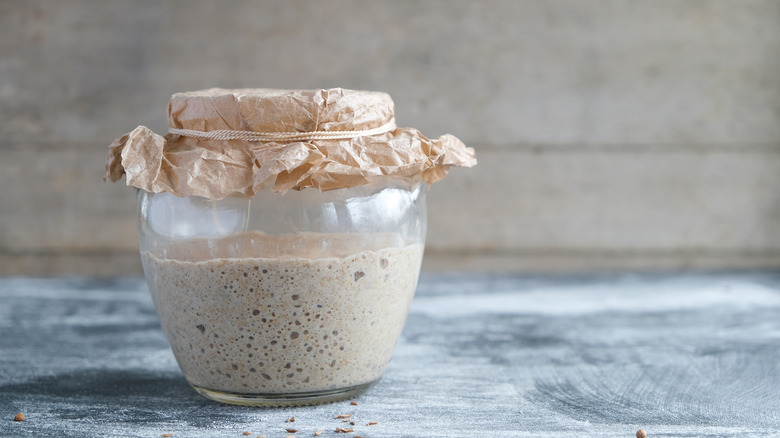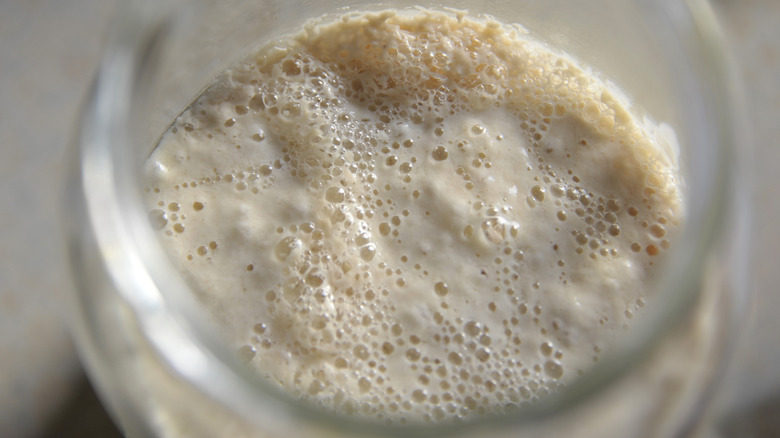What It Means When Sourdough Bread Is 'Ripe'
Getting into homemade sourdough bread will inevitably lead you to the passionate online community of sourdough bakers, and once you're on their turf, you'll encounter a vast lexicon of sourdough terminology that can leave your head spinning. There's amylase and autolyse, batards and bannetons, and a lot of talk about "ripe" starters. As it were, a ripe sourdough starter is not unlike a ripe piece of fruit — it's an indication of readiness.
"Ripe" refers to a sourdough starter that is ready to bake with. Sourdough starter begins as just a mixture of flour and water, but as time passes and you feed it new flour and water daily, it begins to attract microorganisms from the surrounding air. These include the yeast that makes sourdough bread rise and the lactic acid bacteria that give it its characteristic sour flavor (the acid is also why sourdough bread takes longer to go stale). The starter is ripe once it has accumulated enough yeast to leaven a loaf of bread.
How to tell if your sourdough starter is ripe
A ripe sourdough starter is teeming with life, which leaves signs for both your eyes and your nose. The gasses emitting from the yeast will create a rush of bubbles in the starter that cause it to swiftly increase in volume. A ripe starter can double in size within just four hours of feeding. To check that your sourdough starter is ripe, look for a generous amount of bubbles throughout, as if it's carbonated. There should also be a bit of foam on the surface. Another telltale sign of a ripe sourdough starter is the smell. It should be subtly sour, like buttermilk, with strong yeasty notes. If your starter starts to smell like nail polish, that means that the yeast has consumed the food available and needs more.
If your sourdough starter looks and smells ripe, there's one more test you should do to make sure you're ready to bake. Fill a cup with lukewarm water, then drop in a small spoon of sourdough starter (about a teaspoon worth). A properly ripe sourdough starter will have lots of carbon dioxide bubbles scattered throughout it that make it light enough to float. If the sample of starter sinks to the bottom of the cup, it either needs more time or another feeding.
How to ripen an old sourdough starter
A newly established sourdough starter will take about a week of daily feedings before it becomes ripe and ready to bake with. After that point, you can bake every day, as long as you continue to feed your sourdough. Feed it new flour and water every day (and save the sourdough discard to make coffee cake) and within four hours, it should be ripe. However, feeding your starter every day isn't always realistic. It takes time and eats away at your flour supply, and the odds that you're actually baking a new loaf every single day are low. Fortunately, you can store your sourdough starter for the long term in the refrigerator, and re-ripen it when you're ready to bake.
Ideally, a sourdough starter stored in the fridge should be fed once a week. However, even if you forget to feed it for months, you can still make it ripe again by returning to a regular feeding schedule. The neglected starter will probably have a layer of dark liquid on the surface called "hooch," which is simply alcohol produced by the fermentation process. You can drain it off or stir it back into the starter with some fresh flour and water. When reviving a starter from the fridge, it helps to use water that's slightly warm. Starter rescued from the fridge takes longer to ripen than an active starter — about 12 hours after feeding as opposed to four — but after that, you should be ready to bake again.


